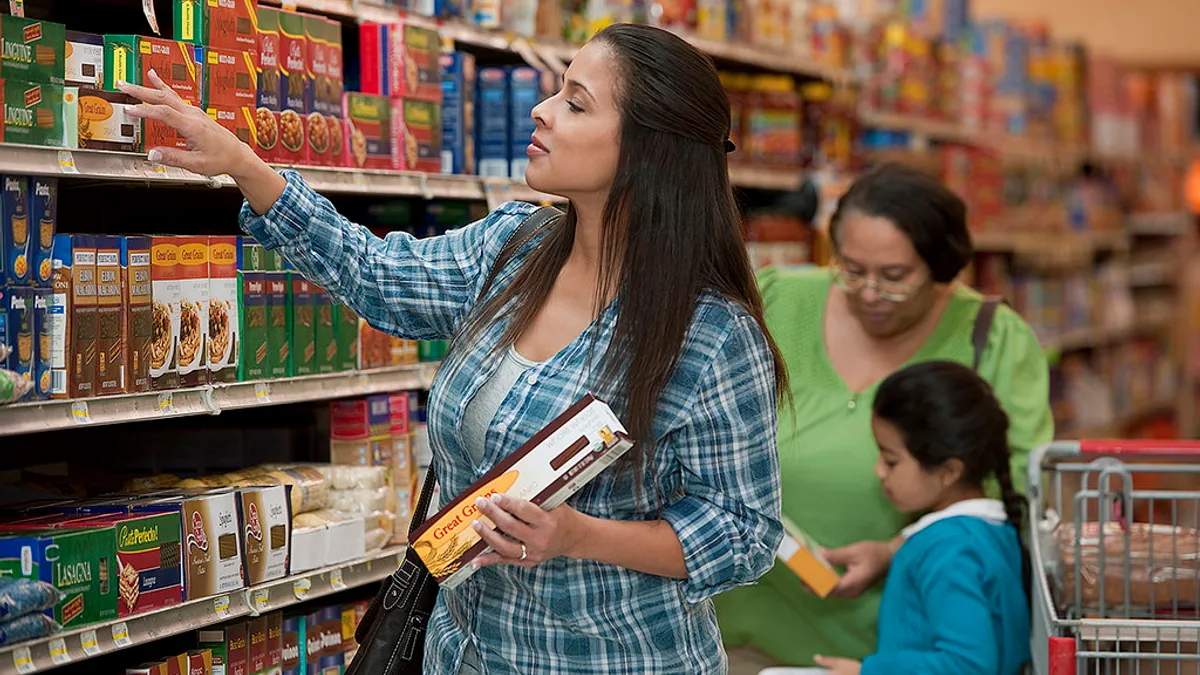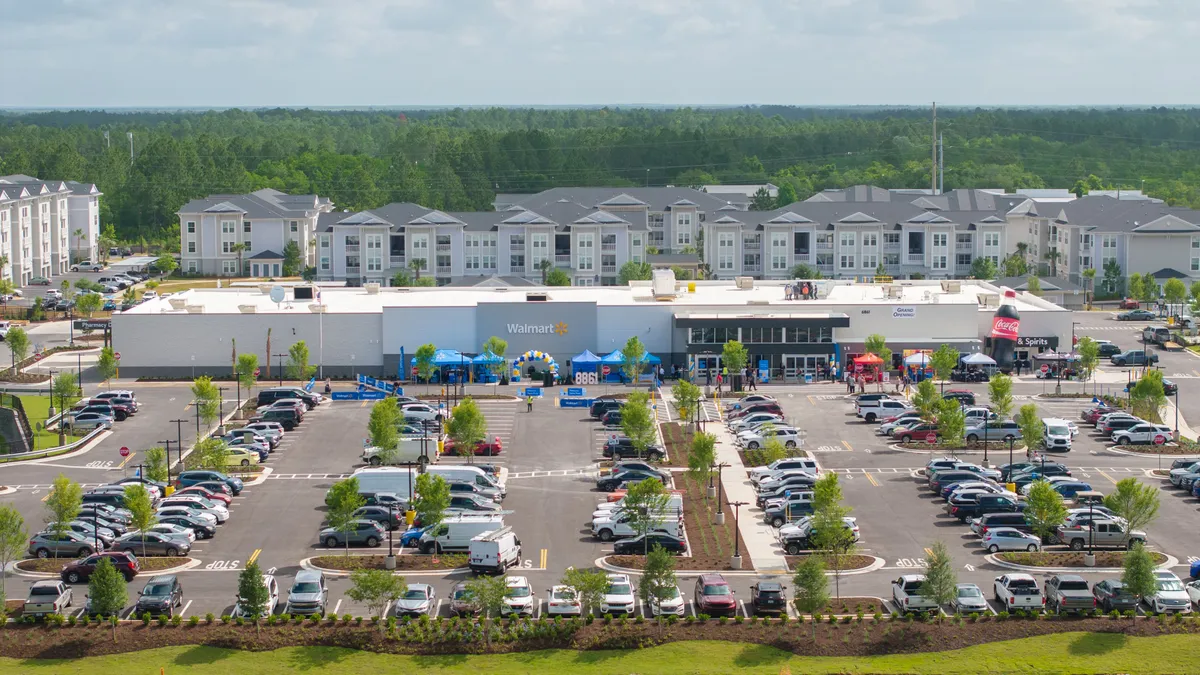Dive Brief:
- Although center store sales as a whole have slipped in recent years, subcategories like nonfat ice cream, frozen foods and sparkling water are proving to be growth opportunities, according to a report from marketing firm Catalina. Value-priced frozen dinners, for instance, saw a 24% increase in trips while dollar sales increased 33%. Overall, center store generates 60 annual trips per shopper each year, Catalina noted.
- Most of these subcategories are resonating with health-conscious consumers and those following a special-needs diet. Shoppers spent $21.37 last year on nonfat and low-fat ice cream, but that number ballooned to $56.76 for consumers following heart-healthy diets, Catalina reported. Ready-to-drink coffee, meanwhile, generated $19.71 per shopper, but $54.26 from those looking to boost protein in their diets.
- Private brands and small CPG brands that generate less than $1 billion in sales annually are driving center store growth, according to Catalina.
Dive Insight:
As Catalina points out, the center of the grocery store is a major trip driver, touching 81% of consumer store visits and 60 annual visits per shopper per year. The problem is that sales within the section are falling as people increasingly shop the perimeter.
Retailers need to rethink center store. They need to trim their assortments, move routinely purchased and bulky items online, and break up those long, monotonous aisles of packaged goods. They need to move away from an outdated store layout that builds pantries and focus on one that builds meals and inspires consumers in the kitchen.
Of course, sweeping change doesn’t come easily or quickly for most retailers. In the meantime, they can focus on growth pockets within center store — of which there are many, and some of them quite surprising.
Frozen foods, for instance, are seeing an uptick in sales, with category volume growth up 1% for the 12 weeks ending March 10, according to a report from RBC Capital Markets. The category has endured a years-long stigma for being uninspired and unhealthy, but that’s starting to thaw as companies have developed new flavors and innovations. Quick-freeze technology, which helps lock in nutrients and flavors, is helping boost the category’s profile.
Low-fat and nonfat ice cream also has a new look these days thanks to companies like Halo Top. According to Catalina, this subcategory drove more than half a million new store trips last year and saw sales jump 67%.
But retailers and manufacturers shouldn’t be lulled into thinking that all products within these promising subcategories will be successful. Halo Top’s allure comes from an expertly marketed promise of both health and indulgence. In frozen foods, Birds Eye — listed by Catalina as a top performer — has moved quickly to incorporate superfoods and a new steaming technology into its lineup.
It’s difficult for retailers and CPG companies to keep pace with consumer demand. But a compass that should help them navigate this change is good health and — as much as possible — freshness. Indeed, many of the promising subcategories tipped by Catalina and others reflect a desire to consume fewer calories, sugar and sodium — and to find products that aren’t heavily processed.










